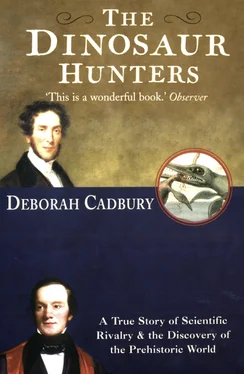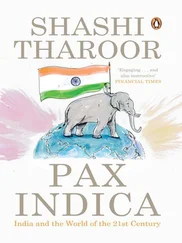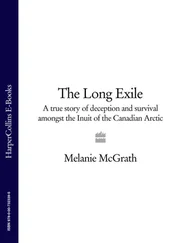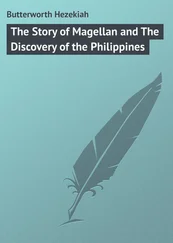4 The Subterranean Forest
To see a World in a Grain of Sand
And a Heaven in a Wild Flower,
Hold Infinity in the palm of your hand,
And Eternity in an hour.
William Blake, ‘Auguries of Innocence’
While William Buckland was preoccupied with grand theories and finding little time to investigate the giant reptile of Stonesfield, Gideon Mantell was rapidly becoming obsessed with the strange fossils emerging from the Weald in Sussex. As he began to prepare his first book, Fossils of the South Downs, during the late autumn of 1821, he wrote, with some excitement, that ‘the relics of a former creation’ that he had uncovered were as ‘extraordinary as any hitherto recorded’.
Everything about this secret, hidden world, buried beneath the Sussex landscape, seemed bizarre and unpredictable. One persistent puzzle was why the bones of large reptilian creatures should be found with fragments of tropical vegetation. After his first discovery in 1820 of what appeared to be an ancient ‘palm’ entombed in the quarries at Whiteman’s Green, Gideon Mantell tried to find out about tropical botany through his contact Charles Konig, at the British Museum.
Tropical plants had been known in Britain since Captain Cook, having discovered the east coast of Australia, Java, and Easter Island, returned from his voyage on the Endeavour in 1771. Accompanied by the botanist Joseph Banks, Cook had brought back hundreds of specimens that he had donated to the British Museum. Banks had later persuaded George III to turn Kew Gardens into a botanical research centre, displaying plants from all over the world. From these eighteenth-century explorations the English horticulturalists began to learn more about the hot, wet ecosystems, unmarked by seasons, within which these plants flourished.
Gideon Mantell set about tracing specialist sources of living tropical plants in order to compare the fossils he uncovered. He was ‘much pleased’ with ‘the unrivalled collection of living palms of Messrs Loddiges of Hackney’, one of the few palm merchants in Georgian Britain. As news of Mantell’s curious finds spread, local people, too, provided unexpected help, such as: ‘the Honourable Mrs Thomas of Ratton, Eastbourne, who presented interesting specimens of the trunks of fossil palms from Antigua’. From these comparisons, Mantell deduced that several of the fossil stems and trunks he was uncovering with the giant animal bones were from ancient tree-ferns. ‘The surface of these fossils is rough, the trunk is nearly cylindrical … They resemble species of arborescent fern, perhaps Dicksonia?’ he speculated. Dicksonia is a contemporary tree-fern that can reach a large size, with a slender stem and huge fronds. Mantell sent fossils to Konig at the British Museum, who confirmed his suspicions: ‘Some tree ferns are very like this with regard to the lozenge-shaped bases of the fronds,’ he replied.
The largest fossil trunk in Mantell’s collection was fourteen inches in circumference and four feet in length. From the thickness of this trunk and the rudimentary branches it looked as if it had once extended a great deal further and was part of something tall and tree-like, not a little shrub. Mantell compared the measurements of this trunk to those of tree-ferns in New South Wales, which could grow to thirty feet with stems of only a foot in diameter. ‘From the imperfect state in which these [fossils] occur it is evident that the originals attained a very large size,’ he wrote incredulously. Huge tropical plants alongside huge reptilian animals: it was barely believable.
Yet each trip to Loddiges’ Greenhouses provided more evidence. Mantell soon identified cycads: ‘the impressions of the leaf stalks on the bark bear a great resemblance to those on the stems of Cycas revoluta,’ he wrote. Cycads look similar to short palms, the trunk covered with the woody bases of leaf stalks and bearing a big crown of leaves at the top. There were also fragments of unknown foliage, heavily blackened with charcoal and quite unlike anything in Loddiges’ Greenhouses. ‘These specimens are so entirely distinct from any that are known to exist in European countries that we seek in vain for anything analogous,’ Mantell observed. Many of the fossils he uncovered are now known to have been Bennettitales, an extinct group of cycad-like plants once dominant in the ancient Weald.
Concealed with this buried tropical forest were the remains of aquatic invertebrates. From his early studies on the Downs, Gideon Mantell was an expert on the marine invertebrates of the chalk deposits. The invertebrates of the Weald were different. He could not see the familiar whorls of the ammonite or snake-stone, of belemnites, nautilus or other shelled creatures which once swarmed in the primitive seas that formed the chalk. Instead there were the casts of shells that he did not recognise; impressions sometimes so faint that they left just the barest trace of their external forms: the hinge of two joined shells, as in certain types of clam and pearl mussel, or the fragmentary pieces of a species of snail, perhaps. It was indeed tantalising; fragments both familiar and unfamiliar, never quite forming a complete fossil or displaying a clear marking. Uncertain what they could be, Mantell wrote to his usual correspondents such as James Sowerby, an expert on fossil shells, hoping he would shed more light on these invertebrates.
As for the massive animal bones that were scattered among the debris of this tropical forest, they remained indecipherable; an ancient hieroglyphic for which he did not have the code. He was increasingly certain that many of the bones, such as the giant thigh bone, did not match those of the sea lizards. They were far too chunky and solid. Although some of the bones were rather like those of ancient crocodiles, he had two sets of very large teeth that were not: the worn teeth of a herbivore and the blade-like teeth of a carnivore. ‘Of the numerous specimens in my collection not one is perfect; by far the greater part consisting of fragments rounded by the action of water and deprived of the anatomical distinctions so necessary to the elucidation of the form of the original,’ he wrote, utterly baffled by these remnants of a ‘former creation’.
His investigations were becoming so compelling that other aspects of his life paled by comparison. ‘Murdered two evenings at cards,’ he complained in his diary. Whether attending the local sheep fair or the ever-popular Brighton races, as a doctor he had a position to maintain in the heart of the community. In provincial society it wouldn’t do to appear hurried, or unavailable. But each night when his duties were done he would pore over the details of the animal bones and tropical vegetation, trying to make sense of the wild profusion of relics from this ancient time.
On the evening of 4 October 1821, an unexpected visitor arrived at Castle Place who was able to help him. Mantell was summoned downstairs to meet a young man who ‘presents nothing remarkable, except a broad expanse of forehead,’ he wrote. ‘He is of the middle size … small eyes, fine chin and a rather reserved expression of countenance.’ The stranger introduced himself as Charles Lyell. Lyell had been visiting his former school in Midhurst, Sussex, when quarrymen had told him of a ‘monstrous clever mon, as lived in Lewes … who got curiosities out of the chalk-pits to make physic with’. The quarrymen were Mantell’s labourers, and Lyell was so intrigued by their account that he rode for twenty-five miles across the Downs to track the man down.
It was soon apparent that Lyell and Mantell had a great deal in common. ‘Mr Lyell is enthusiastically devoted to geology,’ Mantell entered in his diary; ‘he drank tea with us and we sat chatting on geological matters till now – midnight’. Lyell’s interest in geology had started while at Oxford University. Although studying classics, he had been drawn to Buckland’s inaugural lectures in which the professor was at his most electrifying. Lyell’s father had written to a friend, ‘Buckland’s lectures are engaging [my son] heart and soul at present.’ Afterwards, in keeping with his position as the eldest son of minor gentry, Lyell had embarked on a career in law in London, but his eyes gave him trouble. Eventually, his father had indulged his interest in science and taken him to Europe. During one carriage tour across the Alps, Lyell had studied the effects of glaciers on the landscape; on a second trip, he had observed the effect of rivers in forming a coastal plain on the Adriatic coast of Italy.
Читать дальше












